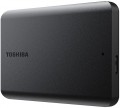Size
Rated capacity is one of the key parameters of a hard drive, which determines how much information can fit on it. For SSHD, this item indicates the capacity of only the hard drive, for RAID arrays, the total capacity of the array.
The volume of information in the modern world is constantly growing and require more and more capacious drives. So in most cases it makes sense to choose a larger disk. In fact, the question of choosing this parameter often rests only on the price: the cost of the drive directly depends on the volume.
If the question is in such a way that you need to choose a disk "smaller and cheaper, but that's enough" — it's worth evaluating the amount of information that you have to deal with and the specifics of use. For example, for an ordinary office PC, designed mainly for working with documents, an internal drive of
2 TB and even
1 TB will be more than enough, and an enthusiastic gamer will need
4 TB,
6 TB and even
8 TB will not be superfluous. If you use a disc for recording from camcorders, then you can get
a 10 TB,
12 TB,
14 TB,
16 TB,
18 TB or more HDD.
Form factor
The form factor in which the hard drive is made.
This indicator determines primarily the size of the device. But its more specific meaning depends on the execution (see the relevant paragraph). So, in the case of external drives, only the overall dimensions of the case depend on the form factor, and then quite approximately. But internal HDDs are installed in slots with a well-defined size and location of holes for fasteners; these holes are made specifically for one form factor or another. For desktop PCs, the standard form factor is
3.5", for laptops —
2.5" ; at the same time, there has been a recent trend in desktops towards miniaturization and the transition to 2.5-inch drives. Theoretically, there is an even smaller form factor — 1.8", but in fact it is used mainly among ultra-compact external HDDs.
Power source (external)
—
USB port. Powering an external hard drive directly through the USB connector used to connect to a computer. The advantage of such disks is that they do not require a separate power supply — thus, they can be used even with laptops in the absence of an electrical outlet. However, it is worth considering that the power of the current supplied through the USB connector may sometimes not be enough to start the disc — especially if the connection is made through a USB hub at the same time as several other devices.
— Thunderbolt. Powered directly through the Thunderbolt connector — the same one used for the main connection. For more information about the connector itself, see “Connection Interfaces”, otherwise this option is completely similar to the USB power supply described above (adjusted for the fact that Thunderbolt does not use hubs).
—
Power supply. Power supply of an external drive from a separate unit connected to a standard 220V network. Such drives may have a connection interface other than USB, are free from problems associated with insufficient power supply, but their mobility is limited by the availability of electrical outlets.
Material
Main material used for external hard drive enclosure (see "Performance").
—
Plastic. The most common option. Plastic is light, cheap, quite practical, including has good strength properties. In addition, it allows you to create cases of complex shape and almost any colour.
—
Metal. Usually, aluminium-based alloys are used for metal cases, but other options are also found. Anyway, such cases are much stronger than plastic ones, and also have a stylish appearance. On the other hand, in terms of impact protection, this material has no advantages over plastic, but it costs much more, and it can weigh much more (depending on the specific alloy).
—
Rubberized. In this case, it usually means an additional external coating of rubber applied to a plastic or metal case. All rubberized cases are classified as shock resistant (see Features/Features) — thanks to their softness and resiliency, this coating provides additional protection against impacts. In addition, this material does not slip in the hands, thereby reducing the risk of dropping the device.
— Leather. Housing made of hard material (metal or plastic, see above) covered with natural or artificial leather. Such a coating plays an exclusively aesthetic role: it gives the hard drive a solid appearance, actually turning the device into a fashion accessory. At the same time, the use of
...leather significantly affects the cost; so paying attention to such models is for those for whom the design of the drive is no less important than the functionality.
